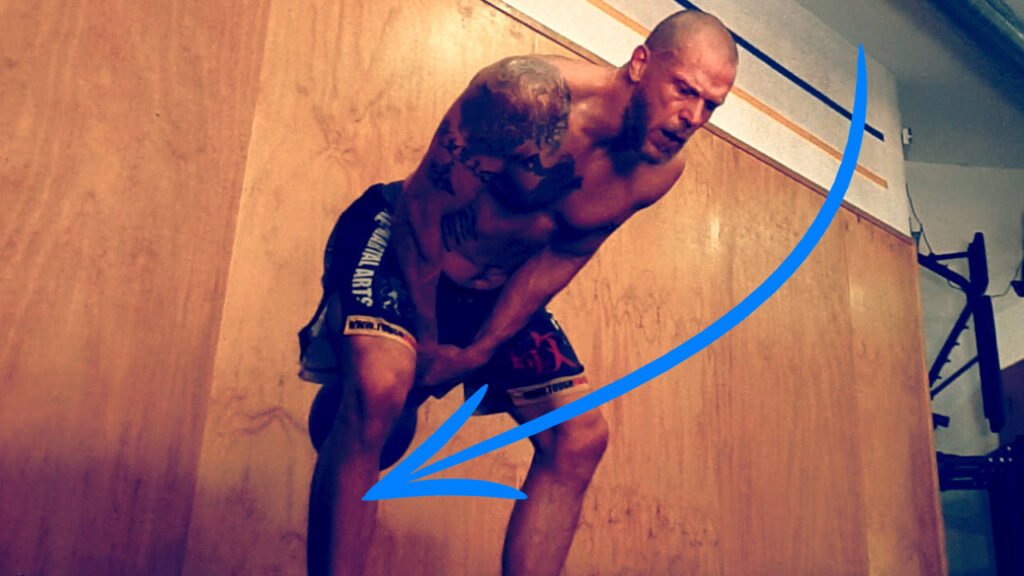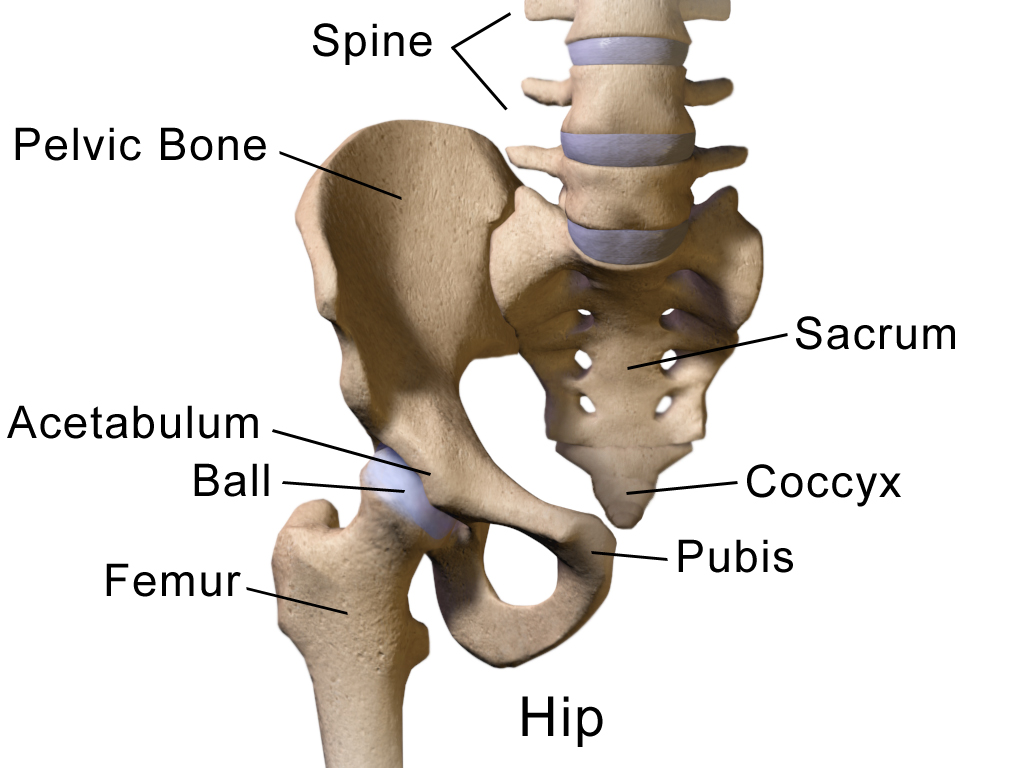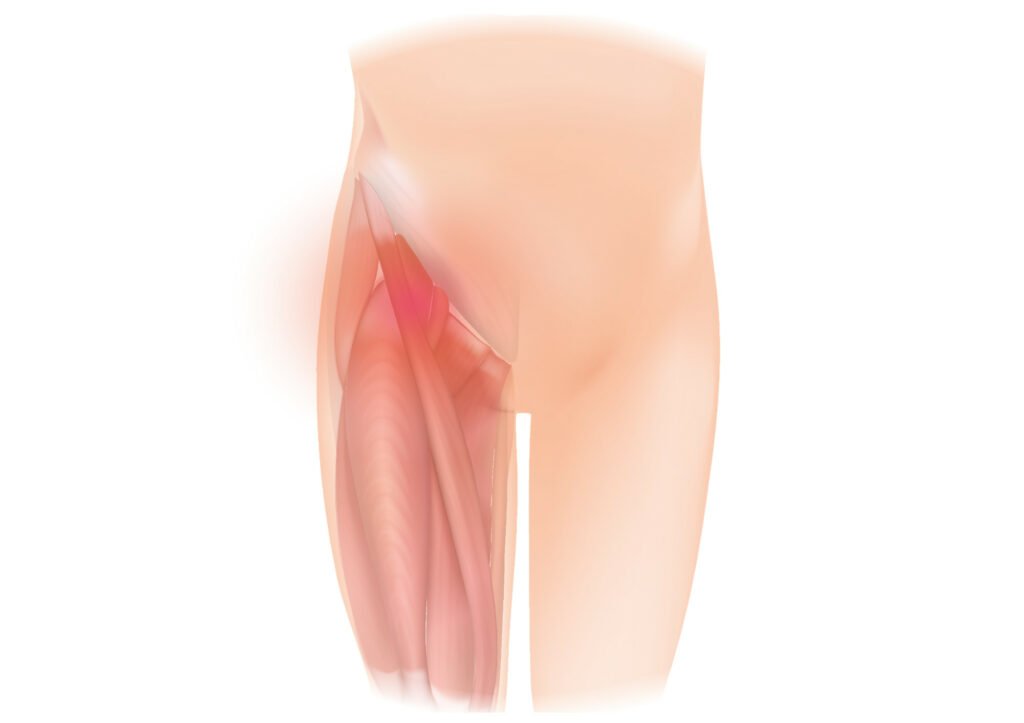Why Do Kettlebell Swings Hurt My Hip?
With the popularity of kettlebells increasing, there’s never been a better time to get in on the action, with online videos, and gyms offering a wide variety of kettlebell weights.
Lots of people are using KBs, then realise they are getting soreness or even injuries after using them.
There could many reasons as to why this is the case.
If you are new to kettlebells , had a previous injury or even if you are using too heavy a weight…
Let’s take a look at why kettlebell swings may hurt your hip and ways this can be reduced and remedied so that you can get back to swinging.
Why Do Kettlebell Swings Hurt My Hip?
Kettlebells swings hurt your hip for various reasons… could it be a case of Osteoarthritis – which over time causes wear and tear of cartilage and hip joint? Or it could be Hip labrum tear. Maybe you are new to training with kettlebells and with the way they move and feel being such a ballistic type of training work many more muscles than a regular dumbbell or barbell would. The way in which you are using the kettlebell might cause problems, your form and posture could be off, which means you are overloading other parts of your body (your lower back) to compensate. This will put extra strain on joints and muscles too. Are you also doing too many swings in one go? What is you’re output volume? Maybe consider doing less swings, reduce workout length or even use a lighter weight kettlebell. If the pain persists, then it would be worth getting in touch with a health professional to help, as well as taking time off. Soreness is fine, where as pain is different. Consider which you are feeling and seek professional advice.
Let’s take a look at some of the reasons as to why you get hip pain from performing kettlebell swings.
1. Form & Posture
Having the correct form and posture in any kind of training is crucial to prevent any kind of injury. We have all seen those people at the gym or online videos, who for some strange reason seem to be using the equipment for a complete random reason other than how the equipment is intended to be used.
With kettlebells are a ballistic method of training that work hundreds of muscles at once and the majority of drills are usually compound in their nature.
Starting to swing a kettlebell can be overwhelming to the body sometimes, so mastering the basics first is important.
The basic hip hinge is the foundation of all deadlift movement patterns that include: the Kettlebell Swing, Clean, High Pull and Snatch.
If you are performing the kettlebell swing correctly then you should feel your buttocks, hamstrings and core muscles working hard. The lower back does work but only to stabilise rather than generate any part of the movement.
A common fault of the kettlebell swing that can cause back pain is not having the correct amount of hip mobility to keep the spine in a neutral position. If you don’t have enough movement in the hips it can cause an injury in the lower back. This ‘overuse’ of the lower back can cause pain and even lead to possible injury.
After a swing workout, your hamstrings should be sore. If your lower back is bothering you instead, the problem might be your “hinge”.
Some hinging pointers: Guide the kettlebell toward your groin as it falls. As it nears your crotch, pivot at your hips and reach your arms back, letting the kettlebell swing between your legs in a pendulum motion. This keeps your back in a neutral position and effectively engages your hamstrings.

Try and think of the swing as two distinct movements:
The hip hinge and the vertical plank. The hinge has been explained above, but the plank at the top of your swing is equally important.
You want to be a straight line from your head to your feet. Lower your shoulders away from your ears, squeeze your glutes and quads, brace your abs, and push your feet through the floor. It should look like you’re performing a plank on the ground, but standing.
If you experience lower back pain while performing the basic hip hinge then you need to either work more on your technique or seek hands-on advice from a professional.
Maybe adjust your stance and foot position? I would not generally recommend having your feet straight ahead, as hip structural anomalies are very common with labrum issues, so maybe adjust your stance to your hips.
If you suffer from tight hamstrings then the movement at your pelvis will be restricted, Which will result in the lower back compensating the load.
Freedom of movement at the pelvis is important to ensure that as you bend forwards your pelvis moves inline with your lower back. If your pelvis is prevented from rotating forwards then your lower back must provide the additional movement resulting in overwork and ultimately back injury.
2. New To The Game?
One of the more obvious reasons that you have pain in the hip area, is because you are unfamiliar with using or training with kettlebells.
Exercising with kettlebells is different to how you would normally train, with such equipment as dumbbells and barbells, as their centre of mass is within the bell itself and not through the middle as it is in a dumbbell.
This means the way it moves is very different and can take some time to get used to. As the kettlebells centre of gravity is always pulling it away from you, which utilises other muscles to keep a hold of this rogue beast!
Is it also possible that you did too much, too soon? How is your training history in general, are you new to fitness all together or just kettlebells? As the volume of your training can have a considerable bearing on things.
Cut down on how long you are swinging the kettlebell, as this could be a factor. Also think about how heavy the kettlebell is that you are using.
This too is a common factor when people begin training with kettlebells, for example… if someone can curl 20kg, this doesn’t mean you can be comfortable with a 20kg kettlebell. Some might take to this weight like a duck to water, but the majority may struggle with the transition.
Maybe limit your swings to small sets of perfectly controlled reps or potentially pay the price in the days and weeks after you do them. You can still go heavy but cut down doing workouts around high rep swings.
3. Previous Injuries, Soreness Or Pain?
It would be foolish to not have a recovery routine in place, which incorporates – rest days, healthy diet, with stretching/rolling routine. All these play a major part in your continued fitness goals.
Is it pain you’re experiencing or soreness? Have you trained with weights in the past? Only you will know this and I ask, because if you have, you will know the difference.
If not, you may not know. Soreness is expected, and can be worked through. Where as pain is bad and should not be worked through. If you don’t know the difference, see health professional or a Doctor.
If the swings cause you pain that doesn’t feel like normal muscle soreness in the days after doing this exercise, you may have to consider if the swing will be suitable for you long term.
If you suffer with any of the following conditions, you should look for an alternative exercise – Herniated discs, post back surgery or you can’t bend forwards without back pain.
If you suffer with any of the above conditions then poor technique can seriously aggravate your lower back and so it is not worth the risk for you. Take a break, that’s an order!
Talk to your physiotherapist about an alternative exercise selection for you.

4. Osteoarthritis, Hip Labrum Tear And Lower Crossed Syndrome
If the pain in your hip isn’t down to being a newbie or bad form it might be down to one of these medical conditions.
Osteoarthritis, the most common type of hip arthritis is the general wear-and-tear of the cartilage in the hip joint. When the cartilage is worn away, bones rub against bones, resulting in severe pain.
Hip labrum tear – If you ever get to the level of fatigue where you are going through the motions you can start hammering the joint and doing damage. For you this motion will require full tension in the glutes and abdominal muscles to keep everything tight and fixed in a safe position especially at the top extended position – you will need to stop the motion with full muscular control rather than just focusing on stopping at the right position like someone with healthy hips.
You may suffer from Lower crossed syndrome. This can occur from prolonged sitting or previous injury that can lead to shortened hip flexor muscles, which in turn leads to tightened lower back muscles.
The tightened hip flexors eventually lead to weakened abdominal/core muscles, along with weakened gluteal/butt muscles.
It’s always important to listen to your body, I know we see plenty of social media posts regarding “pushing through” and “no pain, no gain”, but there has to be some careful consideration as to why your body is telling you that it needs rest.
You can push through at times, as this feeling after a rigorous workout is awesome. However, as mentioned above…theres a difference between soreness and pain.

Final Thoughts…
All things considered, with any sports related injury is to seek the advice of professional in the field. Going to a physiotherapist to isolate the problem or even your doctor for a referral, would be the best course of action should the pain persist.
Maybe take some well earned time off from working out if you have been on a challenging fitness schedule. It doesn’t mean you are weak if you take time off.
It just means you are using your intelligence in the situation.
I see people at the gym all the time, grunting their way through a swing with a heavy kettlebell and you have to wonder what the end result of it all is.
Just to be seen swinging a heavy weight. I train with a little 16kg cast iron kettlebell and it suits me just fine. No one cares about the weight you are swinging and if they do, maybe it’s time to reconsider your outlook on how you workout.
Nothing is worth being badly injured for. I have been there and its a long road back…and I have always told myself…I ain’t never going back (in the voice of Vin Diesel from Fast & Furious)!
If you enjoy sport and use CBD to help with your recovery in between gruelling workouts, then your are in the right place. Here at Sport CBDs, we train hard and recover the best way possible…
We have regular workouts (check out the YouTube channel), CBD news and CBD products to help you gain that edge!
If you wanted to check out the reputable CBD we have on offer here at the site, then please head to the Sport CBDs Store. We also do fitness clothing and yoga accessories too.
Until next time, all the best…



“I see people at the gym all the time, grunting their way through a swing with a heavy kettlebell and you have to wonder what the end result of it all is.
Just to be seen swinging a heavy weight. I train with a little 16kg cast iron kettlebell and it suits me just fine. No one cares about the weight you are swinging and if they do, maybe it’s time to reconsider your outlook on how you workout.”
This is my thought as well. This is a typical case of “il troppo è nemico del giusto”(more is the enemy of enough).
It’s the case with many sports.
What do people train for… To show off, or become and stay a healthy fit person.
To show off, people have the goal to break personal records as a goal, they go heavier and heavier. But purely from a health standpoint this is not productive. But counterproductive. It will lead to joint and tendon problems.
Hi Renato,
I hope you are well?
I just wanted to say I totally agree with what you said.
You made some great points and thank you for commenting.
I hope you have a wonderful weekend and please stop by again.
All the best,
Lee